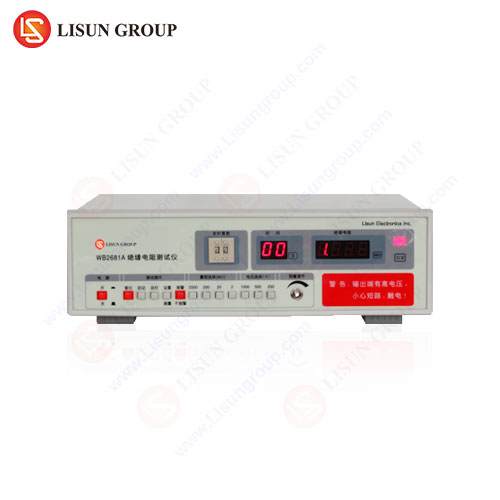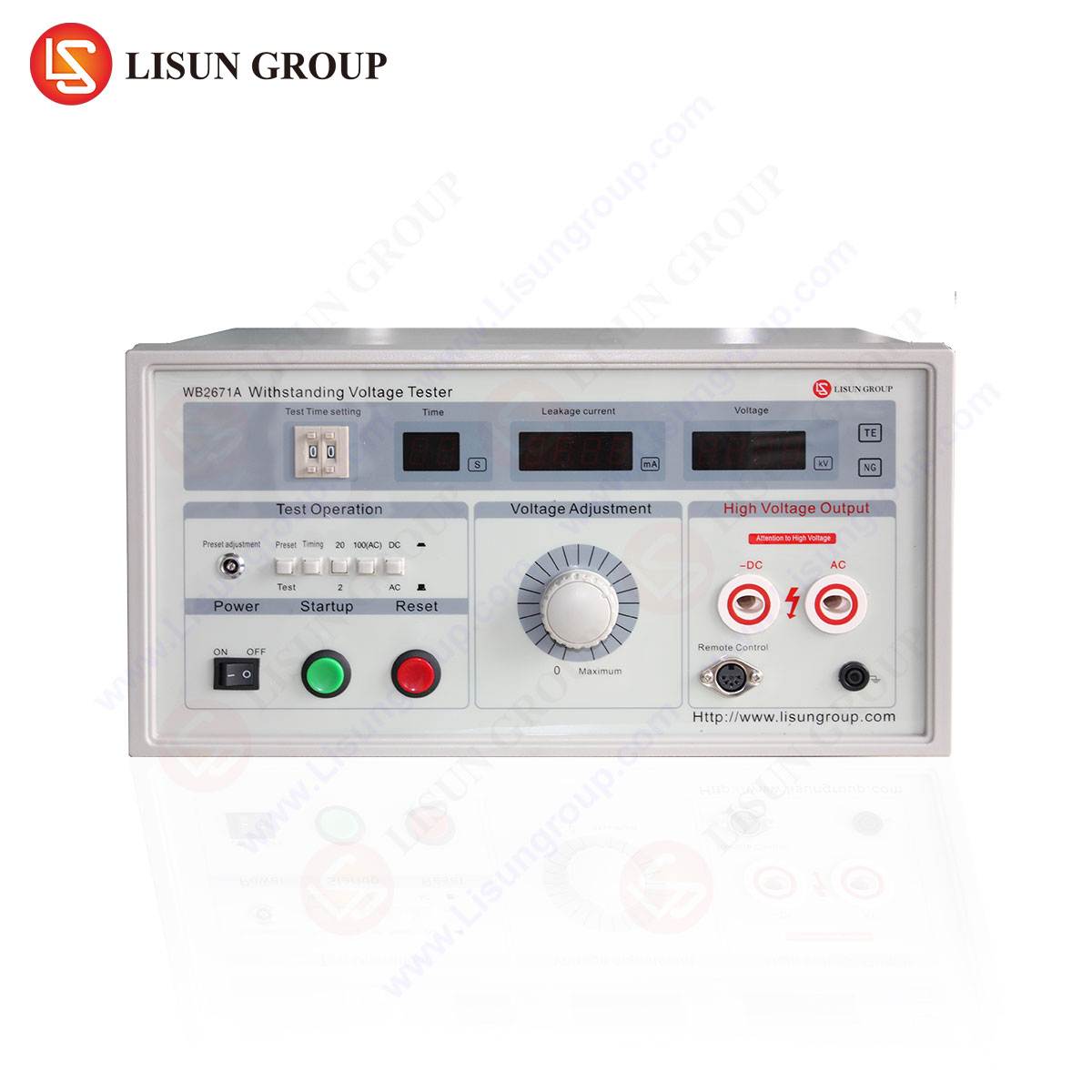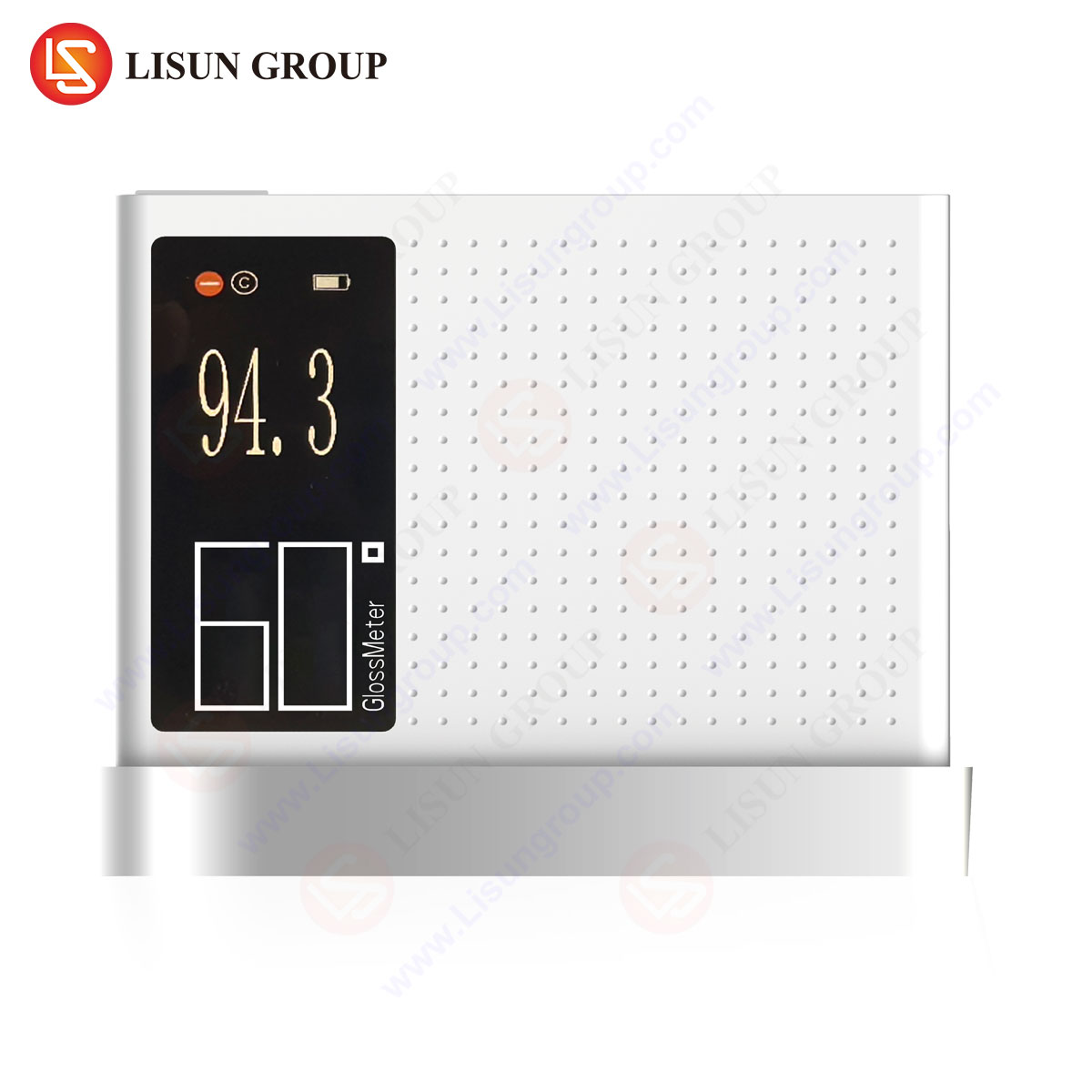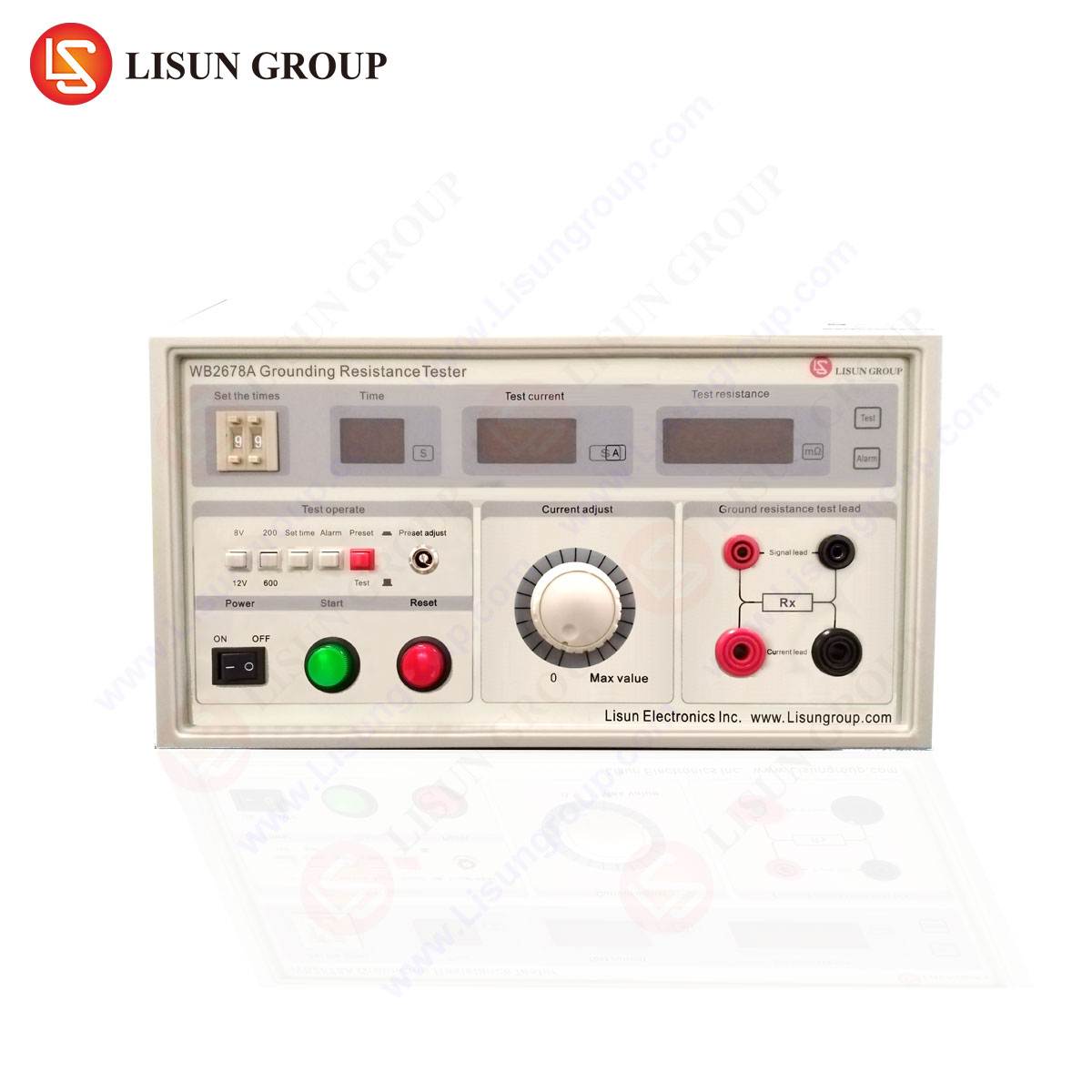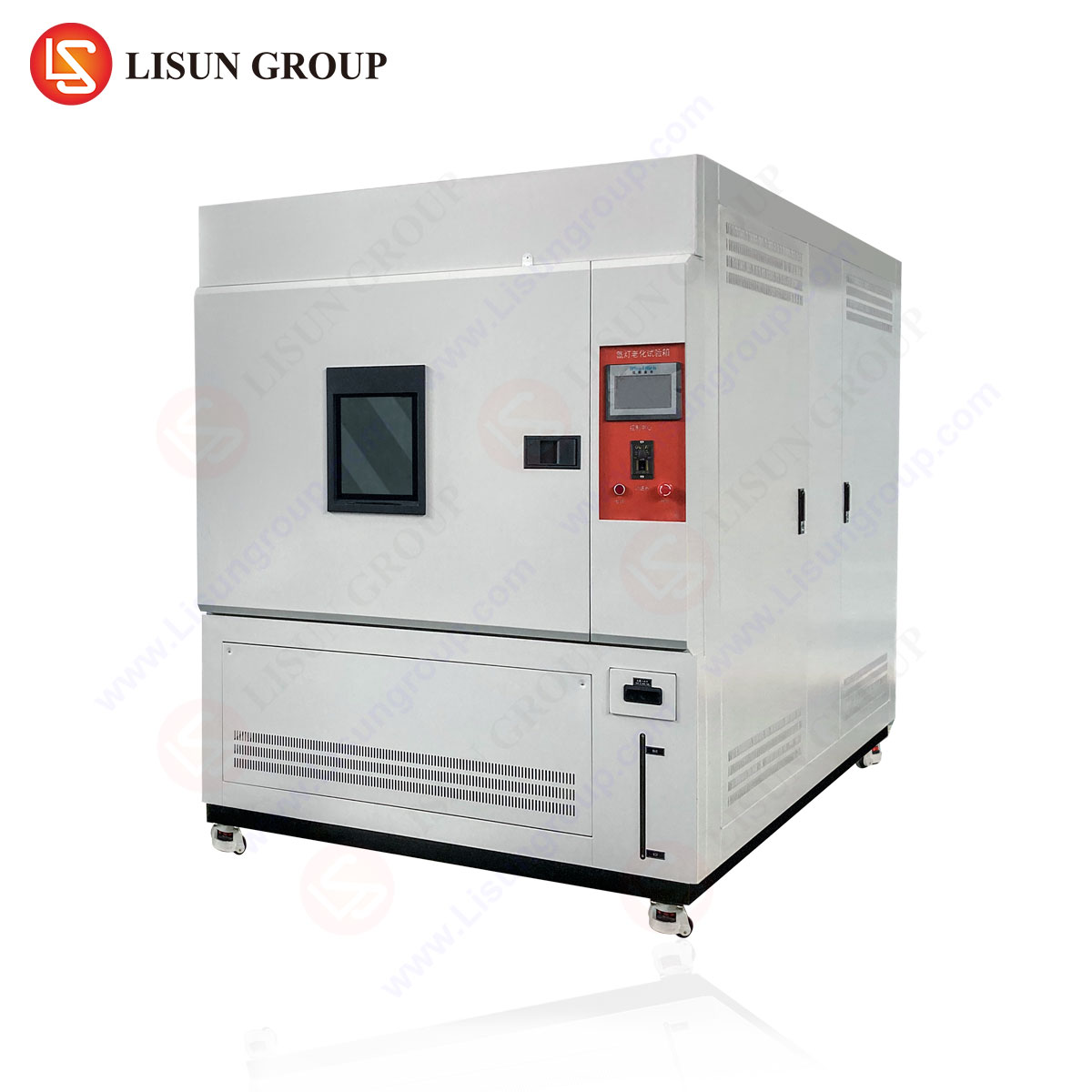Introduction to Leakage Current Testing
Leakage current testing is a critical procedure in evaluating the safety and performance of electrical and electronic equipment. It ensures compliance with international safety standards by measuring unintended current flow through insulation or grounding paths. Excessive leakage current can lead to equipment malfunction, safety hazards, or non-compliance with regulatory requirements. This guide explores the principles, methodologies, and applications of leakage current testers, with a focus on the ليسون WB2675D Leakage Current Tester, a precision instrument designed for rigorous testing across multiple industries.
Principles of Leakage Current Measurement
Leakage current occurs when electrical energy escapes from the intended circuit due to insulation imperfections, capacitive coupling, or conductive contamination. The measurement process involves applying a test voltage to the device under test (DUT) and quantifying the residual current flowing through unintended pathways. The WB2675D employs a high-accuracy shunt resistor network and differential amplification to detect microampere-level currents, ensuring reliable results in compliance with IEC 60601-1, IEC 60990, and UL 62368-1.
Key measurement modes include:
- Touch Current (Contact Current): Evaluates current that could pass through a human body upon contact.
- Protective Conductor Current: Measures current flowing through grounding conductors.
- Alternative Leakage Current: Assesses current under fault conditions, such as open neutral scenarios.
Technical Specifications of the WB2675D Leakage Current Tester
إن LISUN WB2675D is engineered for precision and versatility, featuring:
| المعلمة | مواصفة |
|---|---|
| Measurement Range | 0.001 mA to 20 mA |
| دقة | ±(2% + 5 digits) |
| Test Voltage | 0–250 V AC/DC, adjustable |
| Frequency Range | 45 Hz to 1 kHz |
| Compliance Standards | IEC 61010, IEC 60601, UL 62368 |
| Display | High-resolution LCD with real-time waveform analysis |
| Interfaces | USB, RS-232 for data logging |
The device supports automated test sequences, programmable limits, and customizable reporting, making it suitable for high-throughput production environments.
Industry Applications of Leakage Current Testing
Electrical and Electronic Equipment
Manufacturers of power supplies, transformers, and circuit breakers rely on leakage current testers to verify insulation integrity. The WB2675D detects marginal insulation failures that could lead to premature device degradation.
Household Appliances
Products such as refrigerators, washing machines, and microwaves must comply with IEC 60335-1. The tester evaluates leakage paths through moisture-exposed components, ensuring user safety.
Automotive Electronics
With increasing electrification, automotive modules (e.g., battery management systems, infotainment units) require stringent leakage current checks to prevent parasitic drain or fire risks.
Medical Devices
Per IEC 60601-1, medical equipment must exhibit minimal leakage to protect patients and operators. The WB2675D’s sub-milliampere sensitivity is critical for defibrillators, MRI machines, and patient monitors.
Aerospace and Aviation Components
Avionics systems undergo rigorous testing to prevent electromagnetic interference (EMI) from leakage currents. The tester’s wide frequency range accommodates aerospace-specific requirements.
Competitive Advantages of the WB2675D
- Enhanced Accuracy: Proprietary noise-reduction algorithms minimize interference, ensuring repeatable measurements in electrically noisy environments.
- Multi-Standard Compliance: Pre-configured test protocols for IEC, UL, and GB standards reduce setup time.
- Robust Construction: Shielded enclosures and filtered inputs mitigate external electromagnetic disturbances.
- User-Centric Design: Intuitive navigation and automated pass/fail判定 streamline quality control workflows.
Testing Methodologies and Best Practices
Pre-Test Preparation
- Ensure the DUT is stabilized at operating temperature.
- Verify calibration of the tester using a certified leakage current simulator.
Execution
- Connect the DUT to the WB2675D via appropriate probes or fixtures.
- Select the applicable test standard (e.g., IEC 60990 for touch current).
- Apply the test voltage and monitor real-time current readings.
Post-Test Analysis
- Export data for trend analysis using integrated software.
- Compare results against historical baselines to identify insulation wear.
Case Study: Leakage Current in LED Lighting Fixtures
A lighting manufacturer observed intermittent tripping of ground-fault circuit interrupters (GFCIs) in their LED products. Using the WB2675D, engineers identified capacitive leakage between the driver and heat sink, exceeding 5 mA under humid conditions. Redesigning the insulation layout reduced leakage to 0.8 mA, resolving compliance issues per IEC 60598-1.
Regulatory Standards and Compliance
إن WB2675D aligns with:
- IEC 60601-1 (Medical Electrical Equipment)
- IEC 62368-1 (Audio/Video and ICT Equipment)
- UL 508 (Industrial Control Equipment)
- GB 4706.1 (Household Appliances)
FAQ
Q1: What is the maximum test voltage supported by the WB2675D?
The tester accommodates voltages up to 250 V AC/DC, adjustable in 1 V increments.
Q2: Can the WB2675D measure DC leakage current?
Yes, it supports both AC and DC measurements with equivalent accuracy.
Q3: How does the WB2675D handle high-frequency leakage currents?
Its bandwidth extends to 1 kHz, enabling analysis of high-frequency switching power supplies.
Q4: Is the device suitable for production-line testing?
Absolutely. Programmable test sequences and digital interfaces facilitate integration into automated QA systems.
Q5: What distinguishes the WB2675D from basic multimeters for leakage testing?
Unlike multimeters, the WB2675D provides standardized test modes, waveform analysis, and compliance-specific thresholds, ensuring regulatory adherence.


